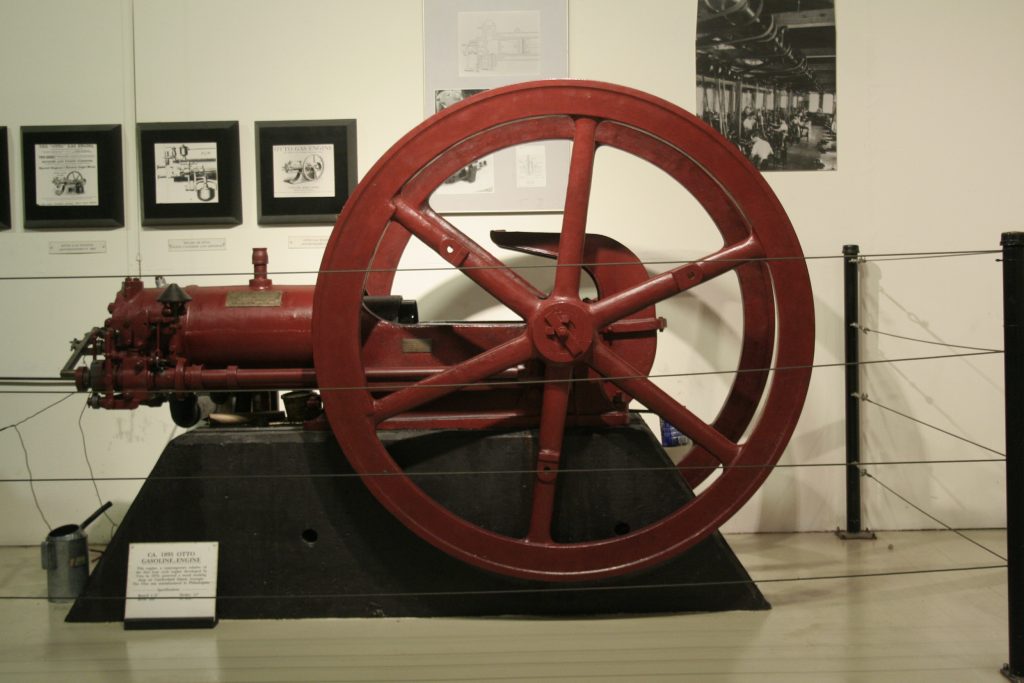1895 Otto Columbian




Description
In the mid-1800s, inventors around the world were looking for alternatives to the steam engine, which was big, expensive, slow to start, and required special licensing to operate. Among them was Nikolaus Otto, a German engineer who built the first functioning four-stroke internal-combustion engine, which was the ancestor of hundreds of millions of automobile, marine and aircraft engines.
Otto built his first gasoline-powered engine in 1861. Three years later he formed a partnership with the German industrialist, Eugen…
In the mid-1800s, inventors around the world were looking for alternatives to the steam engine, which was big, expensive, slow to start, and required special licensing to operate. Among them was Nikolaus Otto, a German engineer who built the first functioning four-stroke internal-combustion engine, which was the ancestor of hundreds of millions of automobile, marine and aircraft engines.
Otto built his first gasoline-powered engine in 1861. Three years later he formed a partnership with the German industrialist, Eugen Langen, and together developed an improved engine that won a gold medal at the Paris Exposition of 1867. In 1876 Otto built an internal-combustion engine utilizing the four-stroke cycle where a cylinder goes through four different stages to create power.
Although the four-stroke cycle was patented in 1862 by the French engineer Alphonse Beau de Rochas, Otto was the first to actually build a functioning engine based upon this principle. As a result, it is commonly known as the Otto cycle.
Due to its size, reliability, efficiency, and cost, Otto’s engine was an immediate success, particularly to run small workshops and factories. More than 30,000 of them were built between 1876 and 1886. This Otto engine was built in 1895 and powered a woodworking shop on Cumberland Island, Georgia for many years.
